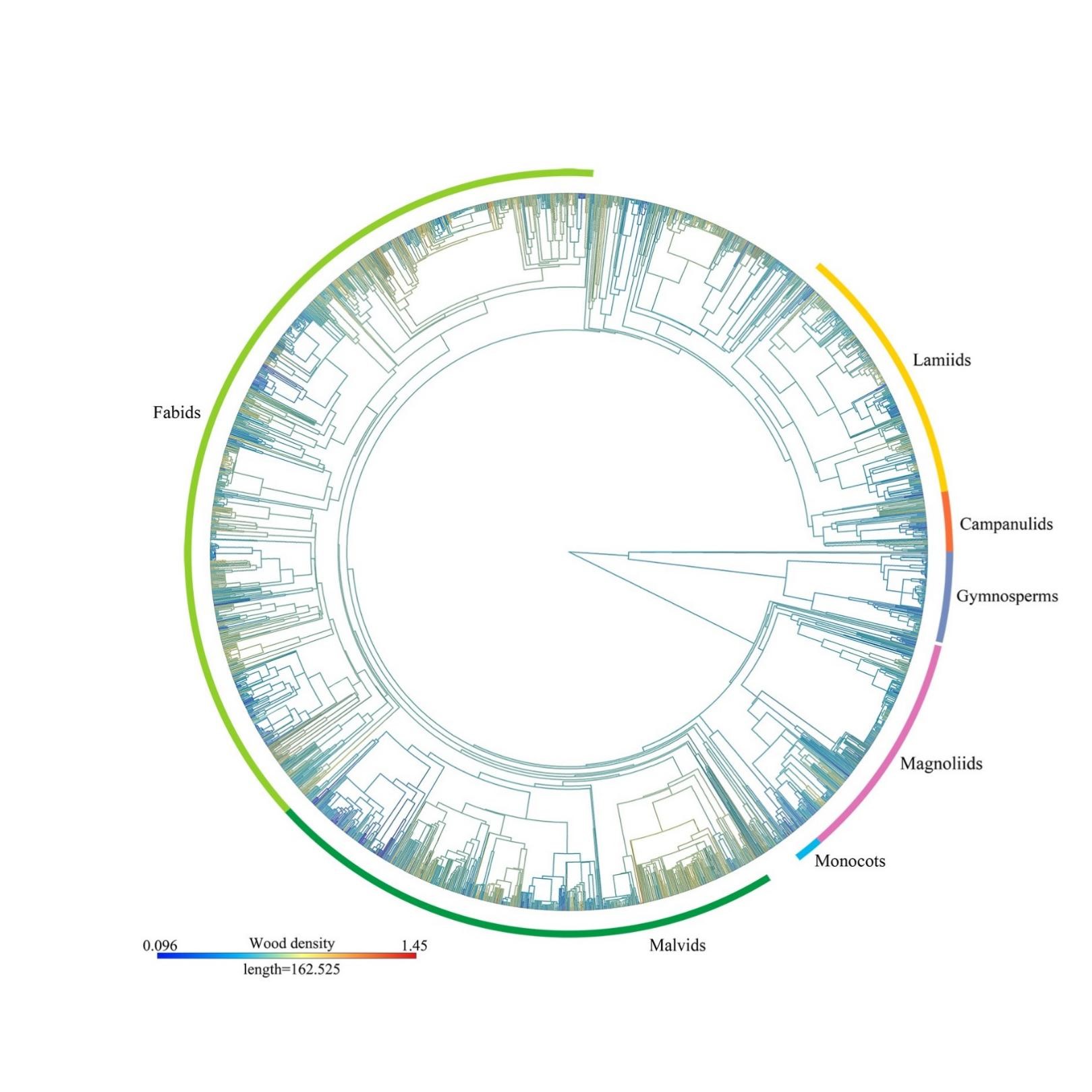To that end, our study utilized a comprehensive global dataset to show that phylogeny plays a significant role in shaping wood density patterns. We assessed phylogenetic signal in different taxonomic (e.g., angiosperms and gymnosperms) and ecological (e.g., tropical, temperate, and boreal) groups of tree species, explored the biogeographical and phylogenetic patterns of wood density, and quantified the relative importance of current environmental factors (e.g., climatic and soil variables) and evolutionary history (i.e., phylogenetic relatedness among species and lineages) in driving global wood density variation.
We found that wood density displayed a significant phylogenetic signal. Notably, wood density differed among different biomes and climatic zones, with higher mean values of wood density in relatively drier regions (highest in subtropical desert).
Our study (https://doi.org/10.1016/j.pld.2024.04.002), published in the KeAi journal Plant Diversity, revealed that at a global scale, for angiosperms and gymnosperms combined, phylogeny and species (representing the variance explained by taxonomy and not direct explained by long-term evolution process) accounted for 84.3% and 7.7% of total wood density variation, respectively. In contrast, current environmental factors accounted for only 2.7% of total wood density variation. When analyzing angiosperms and gymnosperms separately, the breakdown of explained variation differed: 84.2%, 7.5% and 6.7% for angiosperms, and 45.7%, 21.3% and 18.6% for gymnosperms.
###
References
DOI
Original Source URL
https://doi.org/10.1016/j.pld.2024.04.002
Funding information
The Scientific Research Project of Anhui Province (2022AH050873), the State Key Laboratory of Subtropical Silviculture (SKLSSKF2023-08), the Provincial Natural Resources Fund (1908085QC140) and the National Key R&D Program of China (2018YFD1000600).
Journal


